Money

Canadian Polymer Bills
| Canadian Bills | |
| Value | Appearance |
| $5 | 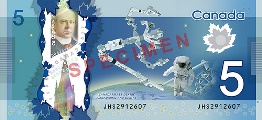 |
| $10 | 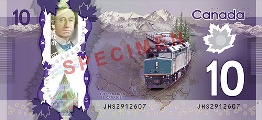 |
| $20 | 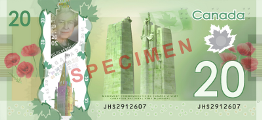 |
| $50 | 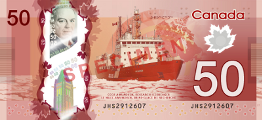 |
| $100 | 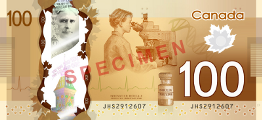 |
Unlike Canadian coins, Canadian bills do not have common nicknames. All new bills are currently made out of a polymer, which is water and tear-resistant; however, you may still encounter some older paper-like (cotton-based) material.
| Canadian Coins | |||
| Value | Nickname | Appearance | |
| 5¢ | Nickel | 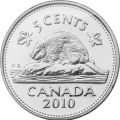 |
|
| 10¢ | Dime | 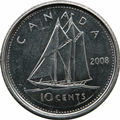 |
|
| 25¢ | Quarter | 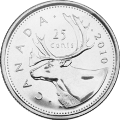 |
|
| $1 | Loonie | 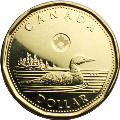 |
|
| $2 | Toonie | 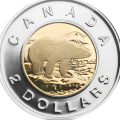 |
|
On the other side of all coins (known as the "Head" side) is a facsimile of Queen Elizabeth II, Canada's reigning monarch.
The Canadian dollar has a floating, not fixed, exchange rate with all other currencies. Check the exchange rate with your currency.
All merchants in Canada accept Canadian cash to pay for purchases. However, cash may be refused above a certain amount (generally, it is unusual to pay for purchases over CAD 300 with cash). It is a good idea to always carry some cash with you, as there is no guarantee that a credit card or debit card will be accepted.
Debit and Credit Cards

Canadian Credit Cards
Debit Cards
- Debit Cards are also known as bank cards or ATM cards
- When you open an account with a bank in Canada, you should be given (or sent) a debit card
- When you use your debit card, the money is immediately withdrawn from your bank account; if you don't have sufficient money in your bank account, the transaction is rejected
- Debit cards are accepted at almost all merchants (stores, restaurants, and other service providers), although a minimum purchase (usually around $10) may be required
- You can use your debit card at an ATM (automatic teller machine) to withdraw cash from your bank account. However, you may be charged a fee (usually around $3) if you use a machine from a bank other than your own
- Not all debit cards are not usable online or for other remote purchases
Credit Cards
- Credit cards allow you to pay for purchases on credit (money extended to you by your bank)
- A credit card may be offered to you by your bank.
- Major credit cards (Visa and Mastercard) are almost universally accepted across Canada.
- These cards often have very high-interest rates, so it's a good idea to pay off the balance (the amount you owe) monthly.
- All credit cards have a limit (the amount you can spend per month on the card), starting at $500 and increasing from there.
- There are many fees associated with credit cards, including fees for spending over your limit, late payments, and international purchases.
- Credit cards can also be used online or for remote purchases (through phone or mail)
Bartering and Haggling
Canadians do not usually barter or haggle, except in the following circumstances:
- Used goods in one-on-one transactions
- Large purchases, such as vehicles
- Property purchases
Most stores will never haggle with you. However, many coupons are often available online or in flyers, which offer discounts on certain items.
Budgeting
Budgeting will help you manage or finances and control your spending.
Learn more about Budgeting